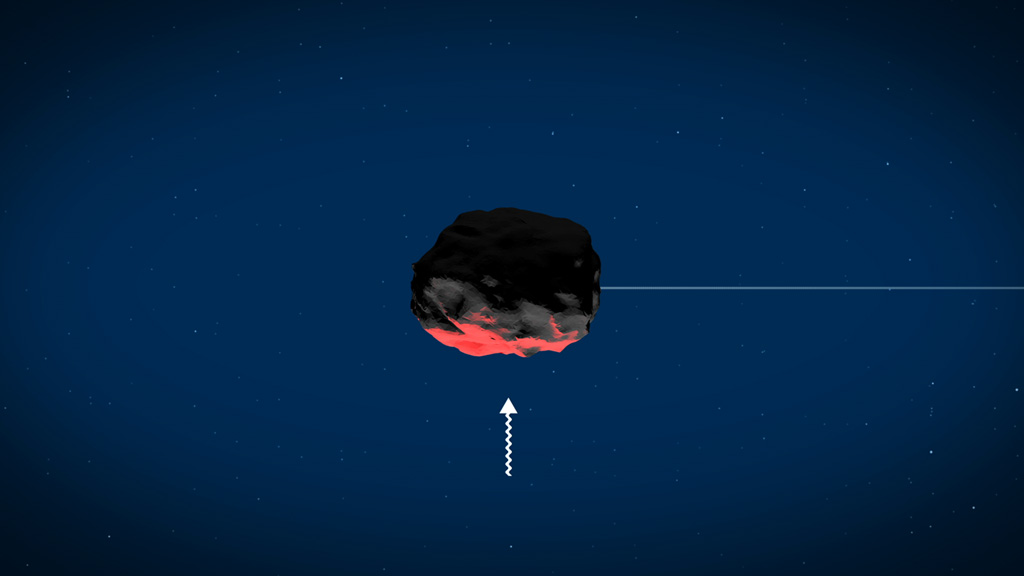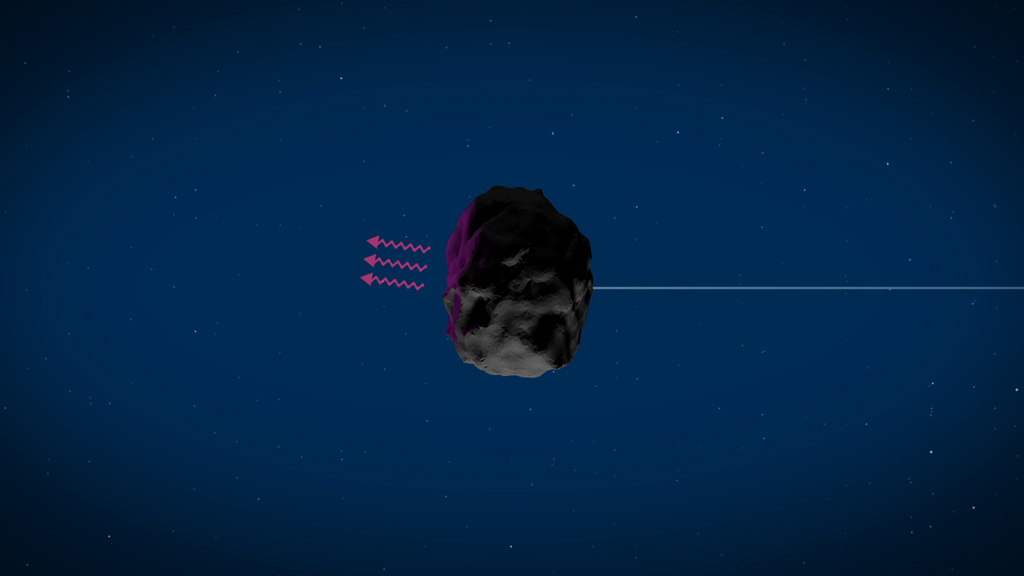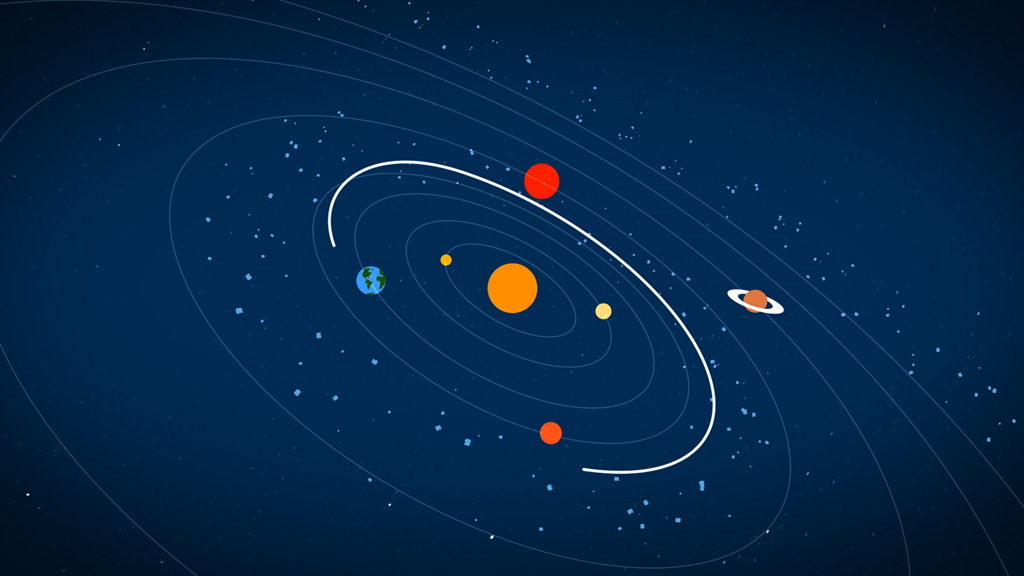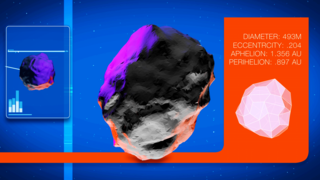Universe
ID: 11923

Rotating asteroids have a tough time sticking to their orbits. Their surfaces heat up during the day and cool down at night, giving off radiation that can act as a sort of mini-thruster. This force, called the Yarkovsky effect, can cause rotating asteroids to drift widely over time, making it hard for scientists to predict their long-term risk to Earth. In order to learn more about this process on asteroid Bennu, NASA is sending a spacecraft called OSIRIS-REx to make detailed observations of Bennu's shape, brightness, and surface features. These factors are thought to influence the Yarkovsky effect, and understanding how will enable scientists to better predict the orbit of Bennu and other near-Earth asteroids. Watch the video to learn more.




Drifting Through Space





Related Story
Story Credits
Lead Visualizer/Animator:
Chris Smith (Self)
Narration:
Chris Smith (Self)
Narrator:
Chris Smith (Self)
Producers:
Chris Smith (Self)
Dan Gallagher (USRA)
Scientist:
Edward Beshore (The University of Arizona)
Lead Writer:
Dan Gallagher (USRA)
Chris Smith (Self)
Narration:
Chris Smith (Self)
Narrator:
Chris Smith (Self)
Producers:
Chris Smith (Self)
Dan Gallagher (USRA)
Scientist:
Edward Beshore (The University of Arizona)
Lead Writer:
Dan Gallagher (USRA)
Please give credit for this item to:
NASA's Goddard Space Flight Center
NASA's Goddard Space Flight Center
Short URL to share this page:
https://svs.gsfc.nasa.gov/11923
Keywords:
SVS >> App
NASA Science >> Universe
https://svs.gsfc.nasa.gov/11923
Keywords:
SVS >> App
NASA Science >> Universe








